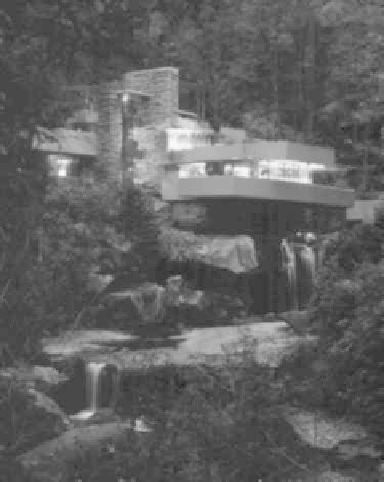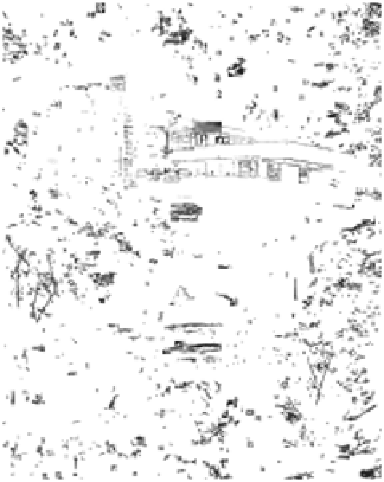Environmental Engineering Reference
In-Depth Information
FIGURE 27.9
Frank Lloyd Wright's Fallingwater in Bear Run, Pennsylvania.
Fallingwater in Bear Run, Pennsylvania, is very likely the most photographed house in
the world (Figure 27.9). In David Pearson's,
Earth to Spirit: In Search of Natural Architecture
,
he writes: “Frank Lloyd Wright … always attempted to build in harmony with the land.
Completed in 1936, Fallingwater is the archetypal expression of Wright's spirit of the land
and sense of place. Perched over the Bear Run waterfall, the building's various cantilevered
levels glide over the water like the branches of a tree.”
18
The reason for bringing up this nondesert example is that such sentiments frequently
accorded to Fallingwater are worthy of deeper analysis. Its design consists of huge slabs
of concrete cantilevered over a waterfall with concrete footings anchored directly into
a living stream. If the house did not already exist, and Frank Lloyd Wright was not so
globally honored, how many of today's environmentalists would give their enthusiastic
endorsement to the concept? I would guess the most accurate answer would be very
few, if any. Calling attention to this example is simply to point out that too much of what
goes under the banner of environmentalism has its own lack of understanding. However
much we respect and defend the untouched land, it is also our home. In addition to the
preservation of open space, what we build requires, not only sensitivity, but also boldness.
27. 2 Su m m a r y
Under the title of Creating Tomorrow, we have offered a glimpse of the future, starting
with an overview of the past. We have advocated the need for a regional connectivity of
open space with all design elements expressing an indigenous sense of belonging. We
observed that settlement patterns will become more decentralized, varied, and artful, and



Search WWH ::

Custom Search